06:35 Of all the orchids suitable for growing in homes, cymbidiums are the most easy-going and adaptable. A handful of species are in cultivation as houseplants, but these have largely been replaced by the thousands of hybrids, which are available with flowers in widely differing sizes. 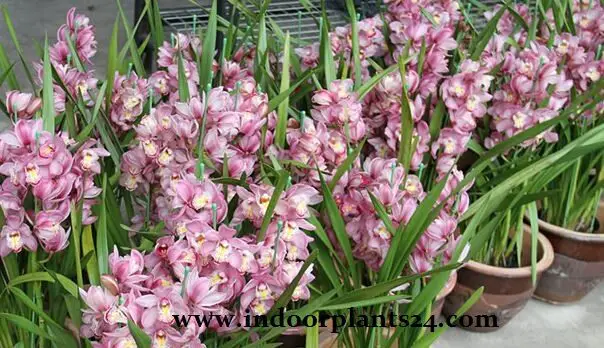
The smaller hybrids are best for heated rooms and produce flowers some lV2-3in/4-7.5cm across. Flower colors, too, are varied, from white, green, and yellow to pink, red, and maroon; those of Cymbidium ‘Mem Rosl Greer,’ shown here, are a creamy pink with a deeper spotted center.
The waxy blooms generally have elliptical petals radiating from a prominent, differently colored, three-lobed center.
Cymbidiums produce clumps of pseudobulbs, which are surrounded by leathery straplike leaves. Flower spikes appear from around the bases of the pseudobulbs, mature gradually, and bear one or many flowers along the length of the spike. 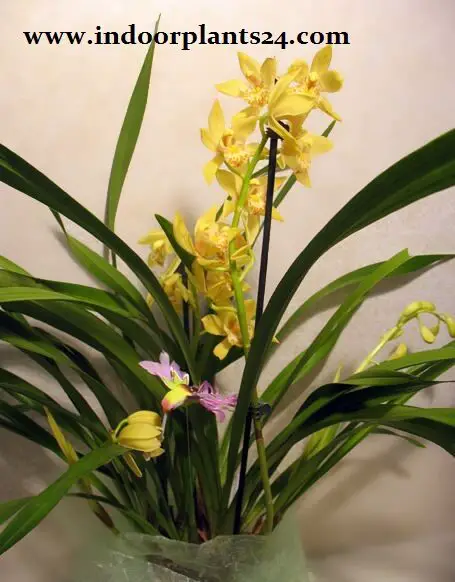 A mature plant may bear as many as 100 blooms in a season. To encourage flowering, cymbidiums need cool temperatures and a rest period of four to six weeks in late fall. After that, they can be returned to their normal location.
A mature plant may bear as many as 100 blooms in a season. To encourage flowering, cymbidiums need cool temperatures and a rest period of four to six weeks in late fall. After that, they can be returned to their normal location.
FACT FILE
ORIGIN Tropical Asia; Australia; hybrids.
HEIGHT 30in-5ft/76cm-1.5m.
POTTING MIX Special orchid medium: a mix of fibrous peat moss or osmunda fiber, perlite and/or grit, and small pieces of charcoal to aid drainage.
REPOTTING Every 3 or 4 years.
PROPAGATION From seed or by division of mature plants after flowering. Divide the pseudobulbs with a sharp knife; select bulbs with shoots and pot up 3-4 to a pot, discarding any dead growth. 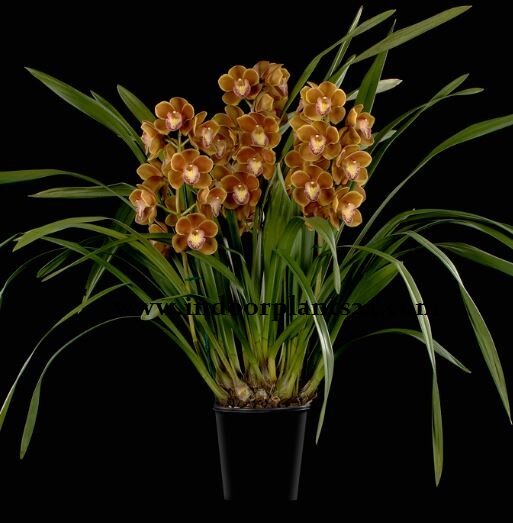 KEEPING PLANTS Set plants outdoors to rest in summer.
KEEPING PLANTS Set plants outdoors to rest in summer.
The sun will ripen the plants and encourage them to flower later in the year.
Cymbidium Hybrids Orchidaceae EYMBIDIUMS PLANT CARE
- Filtered light in summer; direct sunlight in winter. Minimum winter temperature of 45°F/7 C; slightly cooler than normal room temperature at other times. Water every day in summer, preferably in the morning, using tepid rainwater if possible.
- Water once or twice a week in spring and fall, and once every 2 weeks in winter.
- Stand the pot on a tray of moist pebbles to increase humidity.
- Apply a weak liquid fertilizer every 2 weeks in summer; do not feed while the plant is resting.
ALSO RECOMMENDED
Cymbidium ‘Minuet’ has flower stems about 15in/38cm long, each bearing up to 20 brown, green, or yellow flowers, which are l-lV2in/2.5-4cm wide. C. ‘Peter Pan’ bears fewer flowers, but they are exotically colored greenish yellow, with a lip spotted with a deep maroon brown. 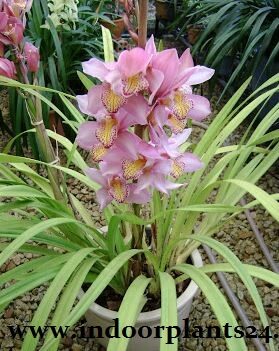 Cymbidium ‘Western 1 Rose’ is one of the most beautiful cidtivars of this orchid. It has sprays of large dusky pink flowers, each with a spotted creamy lip.
Cymbidium ‘Western 1 Rose’ is one of the most beautiful cidtivars of this orchid. It has sprays of large dusky pink flowers, each with a spotted creamy lip.
Aphids may attack flower spikes and buds, particularly during winter. 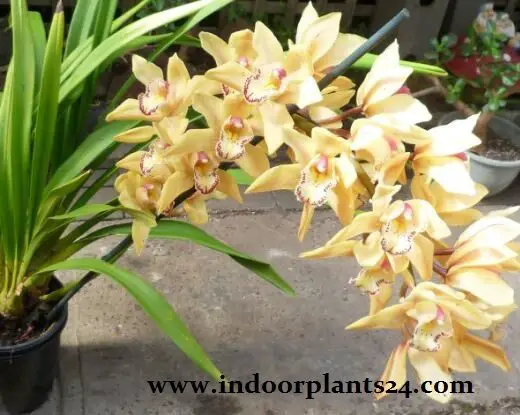 Look for signs of red – spider mites; while not common on cymbidiums, these pests will infest plants that are kept in dry conditions.
Look for signs of red – spider mites; while not common on cymbidiums, these pests will infest plants that are kept in dry conditions.
Mosaic virus will occasionally get a hold on this plant, causing the leaves to become mottled and yellow. There is no cure, so the plant should be destroyed. Failure to take immediate and swift action will allow aphids to spread the virus to other plants.
- Share
- Share
- Share
- Share
